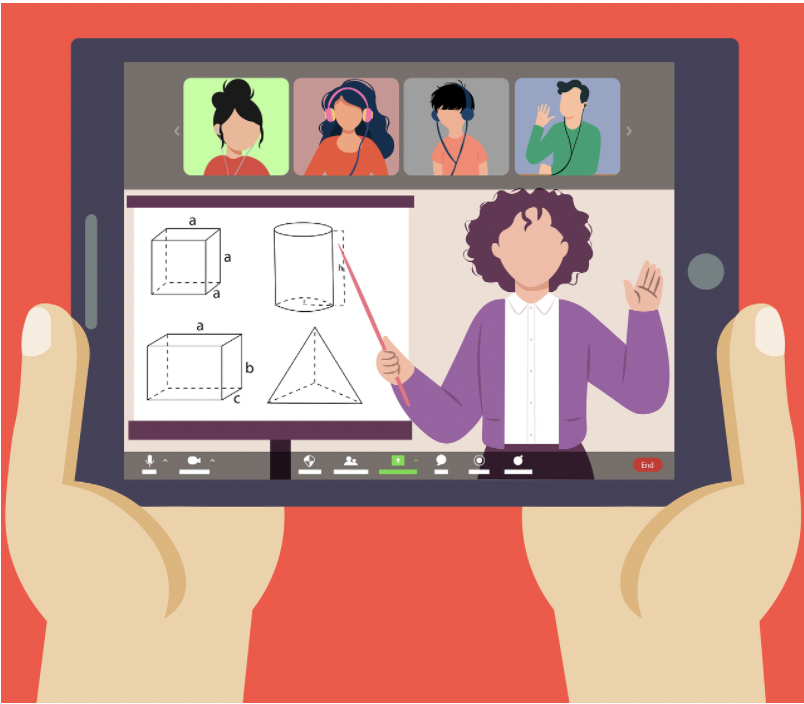Sign up for our daily edtech news briefing today, free.
When schools created hybrid learning approaches to accommodate both in-person and remote students during the 2020-21 school year, many observers predicted that these new learning environments would continue in some form or another well after the current crisis is over.
There were good reasons for this assumption. In a survey last year, at least 10% of K-12 leaders said they would consider offering a blended or hybrid learning model even after the pandemic is over, and 20% said they might offer a fully online option for students. As one superintendent told Education Week, “There’s no going back now.”
Many schools removed the online choice
Yet, when this school year began, many school districts dropped online or remote learning as an option altogether — and many states actually required schools to offer only in-person instruction.
Fewer than one-fourth of US school districts started the year with a mix of remote and in-person learning. New York City, with more than 1 million students, is not making remote learning available to students this year, while Illinois and New Jersey are among the states that have told school systems they can’t offer an online learning option for students except in special cases.
States and districts that have mandated in-person instruction argue that remote learning didn’t work well for most students. However, not providing a remote or online learning option for families is a big mistake, because it takes away their ability to choose what’s best for their children.
Parents want options
In a survey of parents by the National Parents Union, 70% said they want school systems to offer multiple ways for their children to attend school. The takeaway here is clear: Parents want the ability to decide if their child attends school in person or remotely.
Some parents still aren’t comfortable sending their children to school in person because of the pandemic. What’s more, being able to learn online makes education more convenient for some students, such as those who have health problems or those who feel threatened while at school — and some students have thrived in an online learning environment.
Providing an online learning option can be challenging for schools. Teaching successfully in a remote or hybrid learning environment is very different from teaching students in person. Educators must be highly trained and skilled in best practices for online teaching and learning, including how to engage students, foster collaboration and support learners. A key reason many students struggled in the sudden shift to remote learning when the pandemic first emerged was that educators weren’t prepared to teach effectively online.
Some students leave districts to find virtual options
However, if public K-12 school systems don’t provide an online or remote learning option for students going forward, they risk losing many families to other types of schools that can better serve those families’ needs.
Charter schools in 39 states saw an influx of 240,000 new students during the 2020-21 school year, The 74 reports. In some states, enrollment in full-time virtual schools accounted for much of the student movement.
“Families are sending a clear message: They want more public-school options,” said Nina Rees, president and CEO of the National Alliance for Public Charter Schools. “From the Pacific Northwest to the Deep South, the pandemic forced families to rethink where and how education could be delivered to their children.”
Schools, districts can partner with vendors
The reality is that remote learning does not have to be an all-or-nothing proposition. Partnering with a high-quality online learning provider allows K-12 school systems to give parents a remote learning option for their children, keeping students within their own school district instead of losing those students (and the funding that accompanies them) to for-profit online charter schools. And it eliminates the challenges associated with delivering online instruction for themselves.
A good program features courses where students learn and apply key concepts through authentic, hands-on projects. It will have a robust learning management system that takes full advantage of online tools for learning. Individual student support is also a high priority; online teachers should work closely with students, providing frequent one-on-one feedback to ensure they don’t feel lost in class. Local, on-site coordinators at the students’ school can provide additional support to help students stay on track.
Although states and districts that have eliminated remote learning believe they are acting in the best interest of students, the reality is that no school system should adopt a one-size-fits-all approach to instruction. The pandemic has shown some families that online learning may be a strong option for their child, and parents want choices in how their children learn.
Jane Gallagher is the vice president of operations for VHS Learning, a nonprofit provider of supplemental online courses for more than 25 years.
________________________________
If you liked this article, sign up for SmartBrief’s free email newsletter on EdTech. It’s among SmartBrief’s more than 250 industry-focused newsletters.
More from SmartBrief Education:
- 5 ways new school-home communication meets family, staff needs
- 5 virtual-classroom tools to foster authentic connections
- Changing the classroom experience with instructional audio
- Powerful social media solutions for students
- How comics curriculum boosts SEL
- 8 ways to make vocabulary instruction more effective
